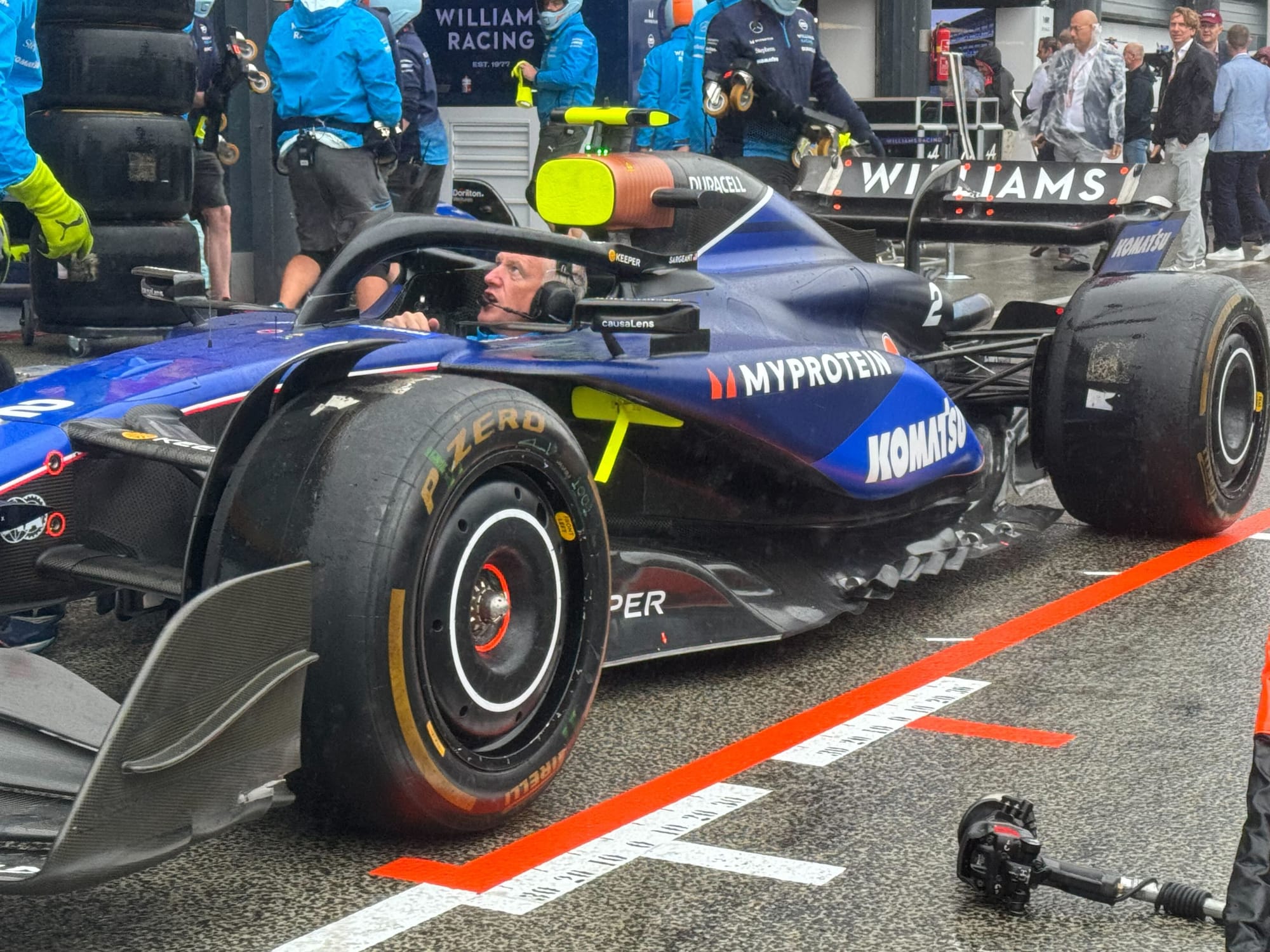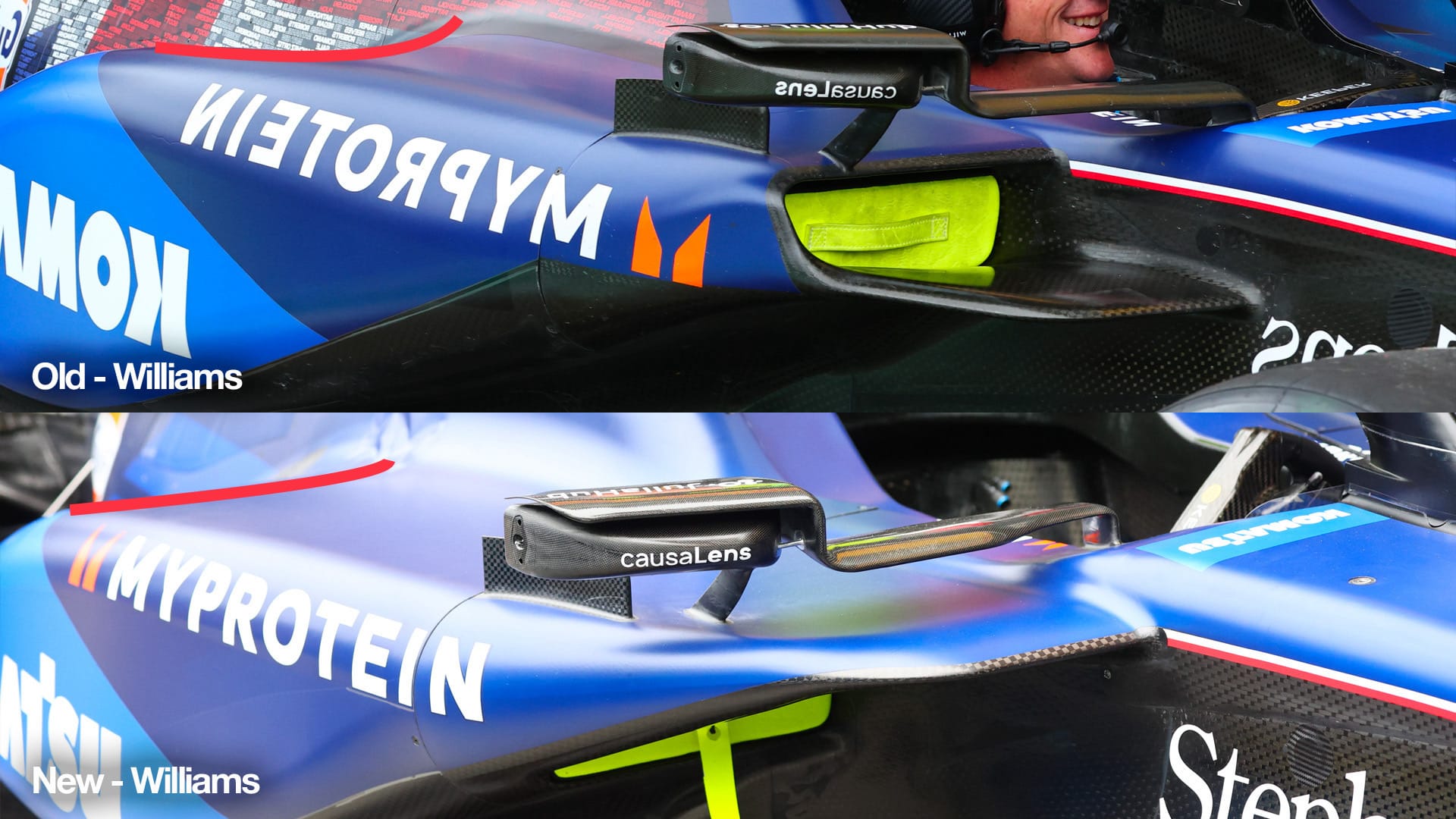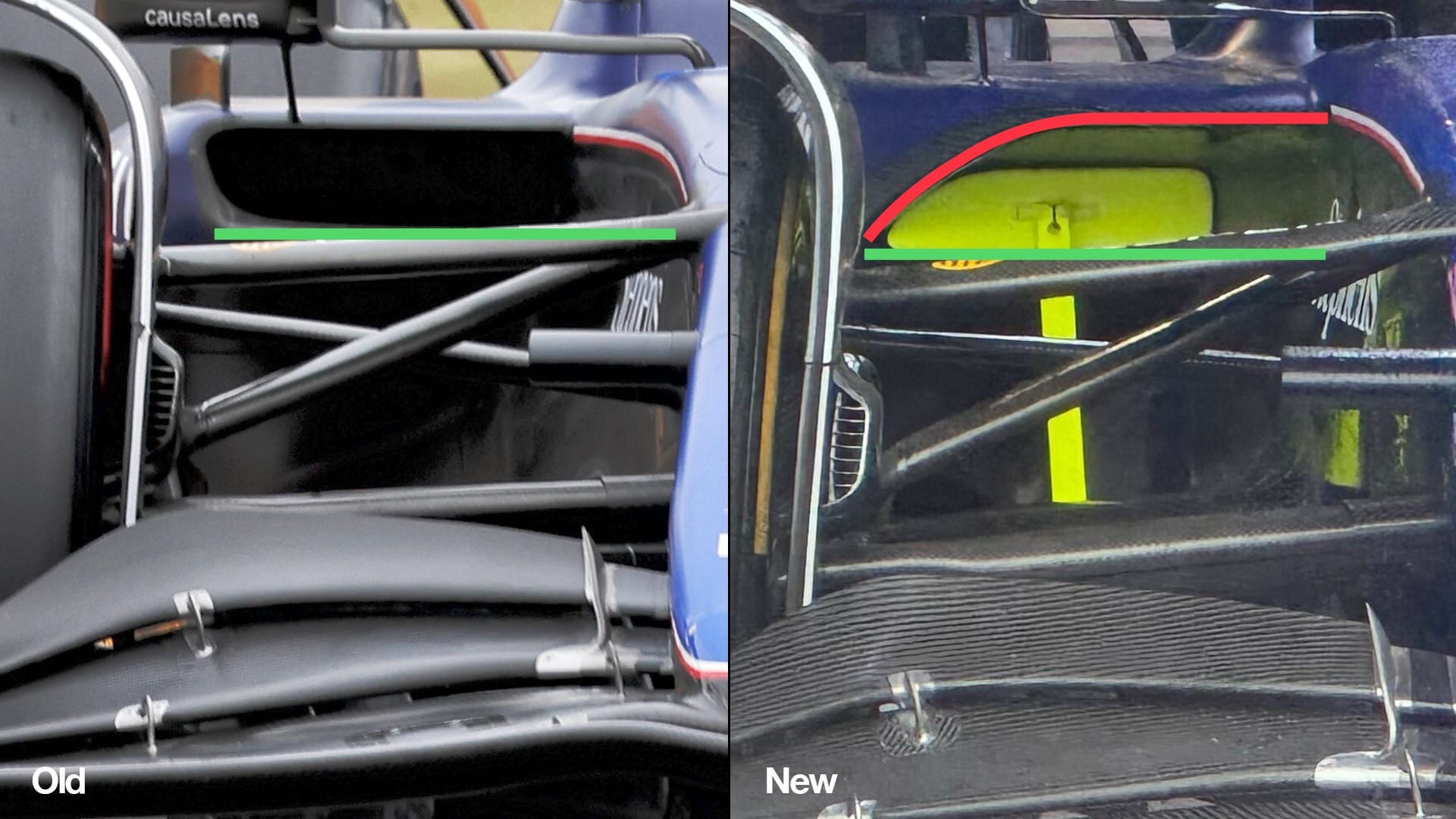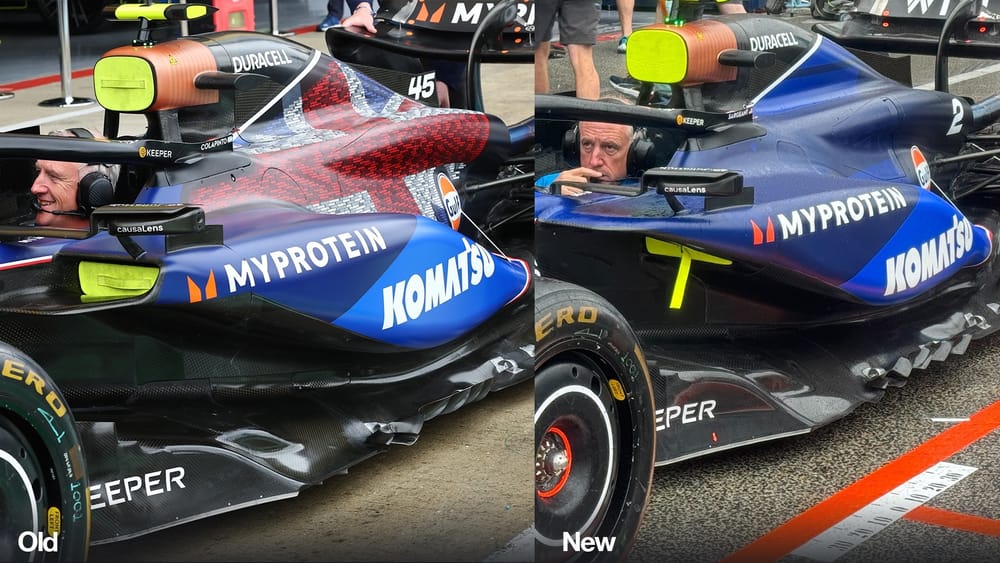Up Next

Williams has introduced what driver Alexander Albon has described as "our first proper upgrade" of the 2024 Formula 1 season at Zandvoort.
That doesn't mean the FW46 has gone unchanged through 2024 so far - but rather the team had primarily focused instead on weight reduction rather than adding load.
In terms of aero performance, across the first 14 races the main aerodynamic upgrade was a front wing introduced at the fourth race of the season in Japan - with this new Zandvoort package the first of a pair of significant upgrades, with another expected at some point in the upcoming Azerbaijan/Singapore double-header.
"We've got some good upgrades coming this weekend, we've got more coming down later, and they kind of go together - but they are split in terms of timings," Albon explained. "Nothing crazy, I think the second one is more about balance and the first one is more about load."
The thing about Williams' weight issue is it is a simple time deficit. On average, 10kg is equivalent to around 0.3s and earlier this season team principal James Vowles said Williams was losing four and a half tenths to weight. It’s essential to get that weight down because it’s guaranteed laptime, with teams ideally targeting getting under the 798kg limit to allow for a little variation in weight distribution within what’s allowed.
Vowles said that the monocoque itself is 14kg lighter than it was last year, so the weight-saving needs to be made in all the other parts attached to that.

That continued weight-saving push is part of this upgrade, too, in particular with the roll hoop change. There are small aerodynamic changes as part of this - but the main thing is the weight-saving. Any weight reduced as high as the rollover bar will not only pay a dividend on the actual laptime just from being lighted, but it also lowers the centre of gravity of the car. This, in turn, has the potential to reduce tyre degradation.
Primarily, this package is a big aerodynamic upgrade. Mainly, it’s around the radiator intake sidepod leading edge. That, in turn, has airflow effects further rearward, so it always means that there are changes further downstream to optimise the complete package.

As Red Bull pioneered at the beginning of this season, with McLaren and Ferrari copying, the top of sidepod surface has now been extended further forward. This allows better management of the high-quality airflow that is going over this surface and contains the front wing- and suspension members-disrupted airflow in the undercut area of the sidepod.

Interestingly, the sidepod gulley (red line) has been reduced. With less airflow spillage over this top surface at speed, there is obviously less flow management to cater for.
In turn, the below comparison shows that from a front view it’s not quite the same as the Red Bull or its derivatives. Matching the flow off the front wing shows that the outer upper corner (red line) has been reduced to allow that front wing wake to travel down the outside of the sidepod.

The green line shows the lower surface is not dissimilar in its location from the original, so this points to the internal radiator ducting and cooling components not being vastly different. Chief technical officer Pat Fry has also confirmed that is the case.
As for the changes further downstream, Williams has a new floor geometry and diffuser modifications. However, we rarely see any of that.

What we can see is that the front floor corner exit vanes (yellow ellipse), or as they call them ‘fingers’, have been made more aggressive. This will increase the airflow extraction in this area, allowing the diffuser to influence the airflow further inboard, overall adding up to potential increased underfloor downforce.
It will be interesting to see how these developments work out. Despite this being the first major aerodynamic upgrade, Williams hasn’t been far away at times in Albon's hands - and gains from this package and what’s to come could allow it to be consistently in there with the leaders of the midfield bunch.



